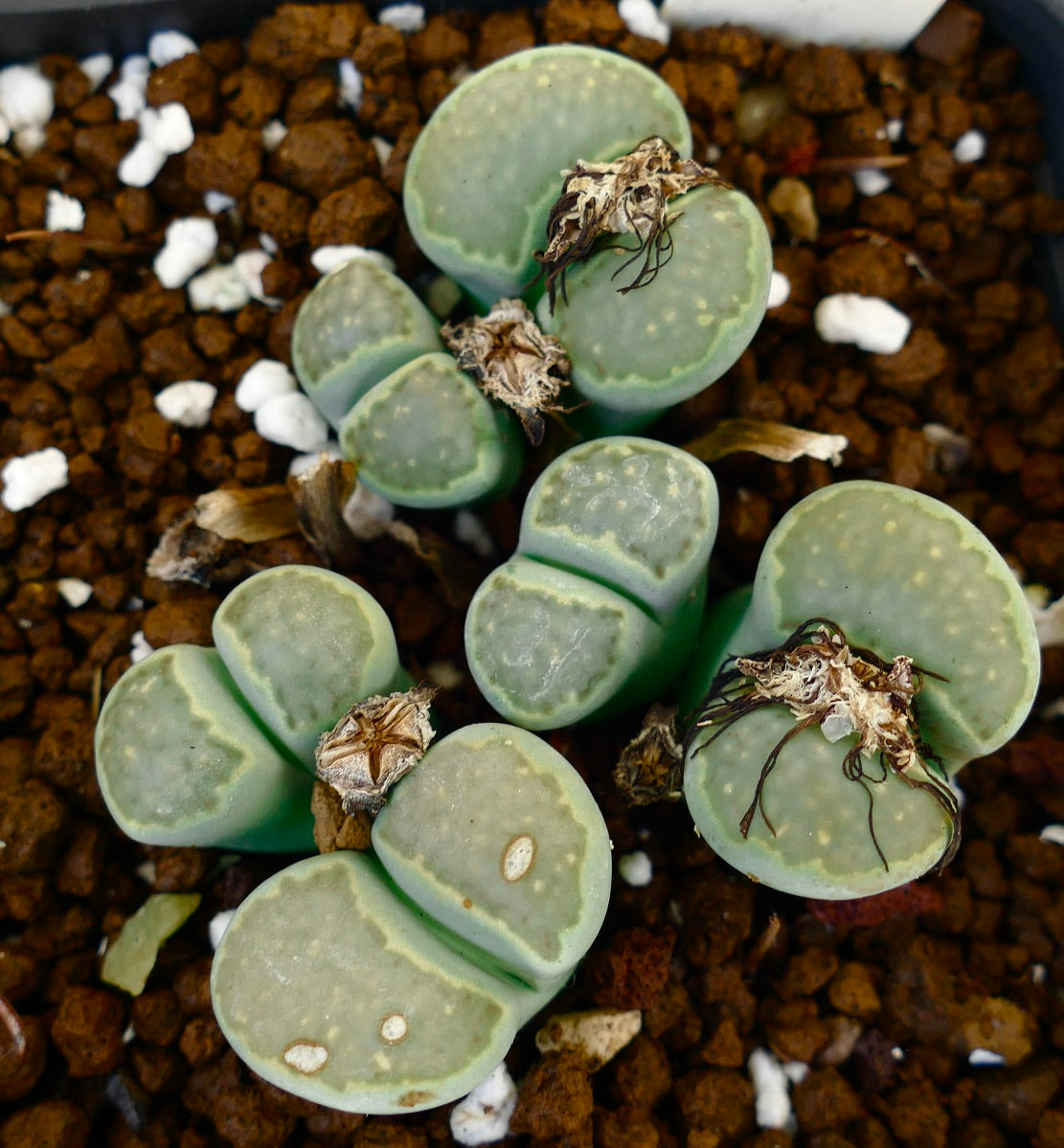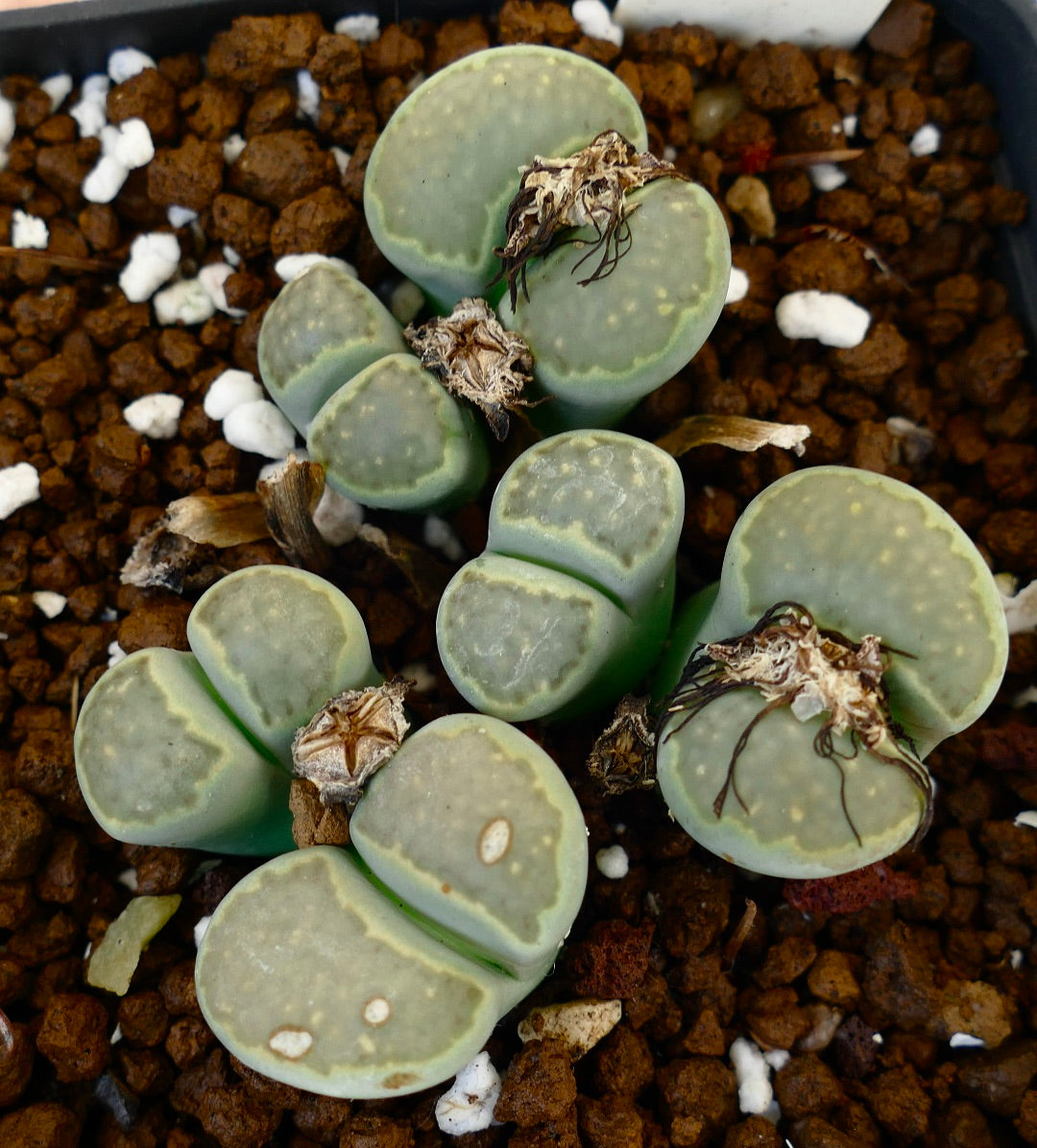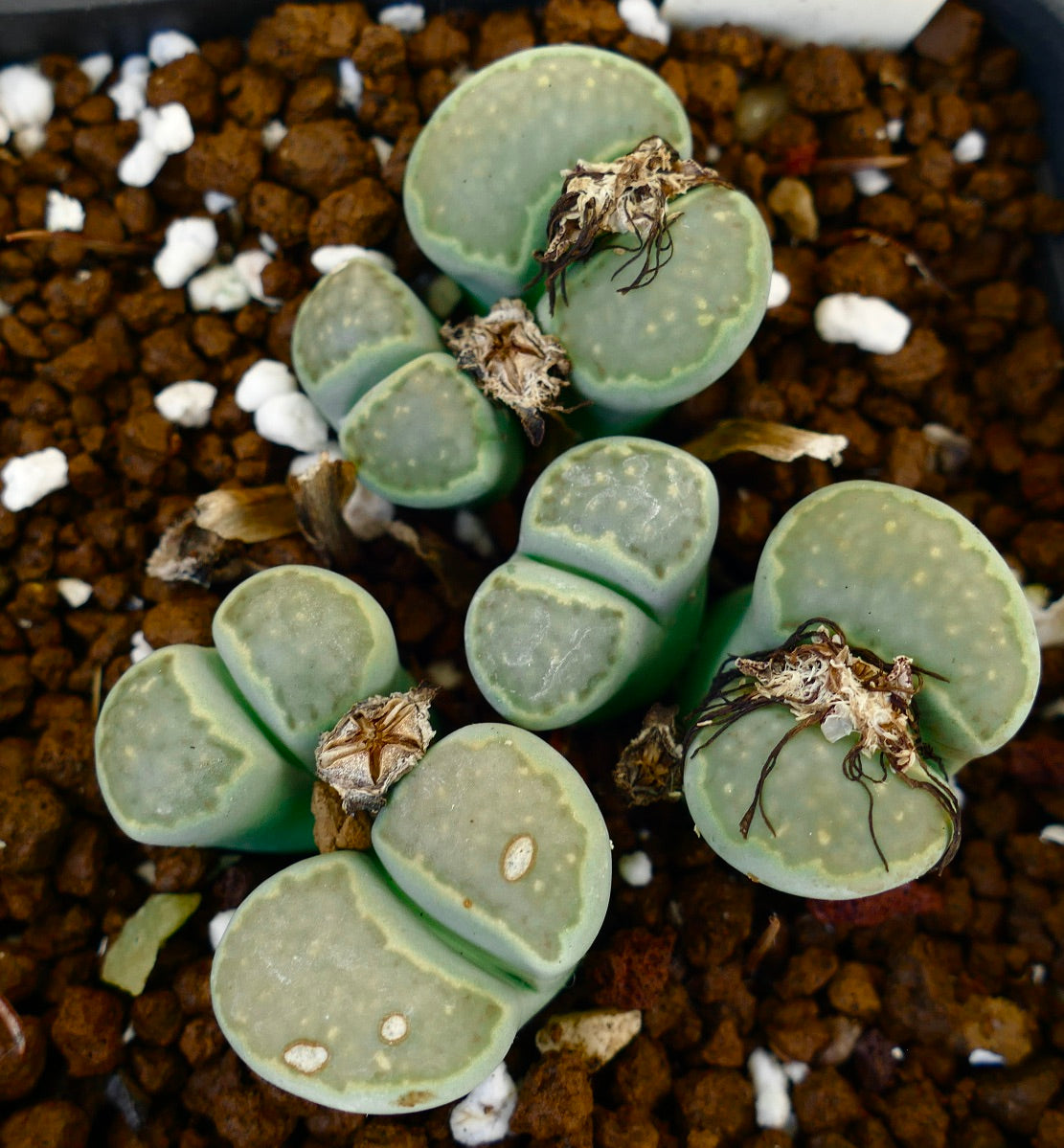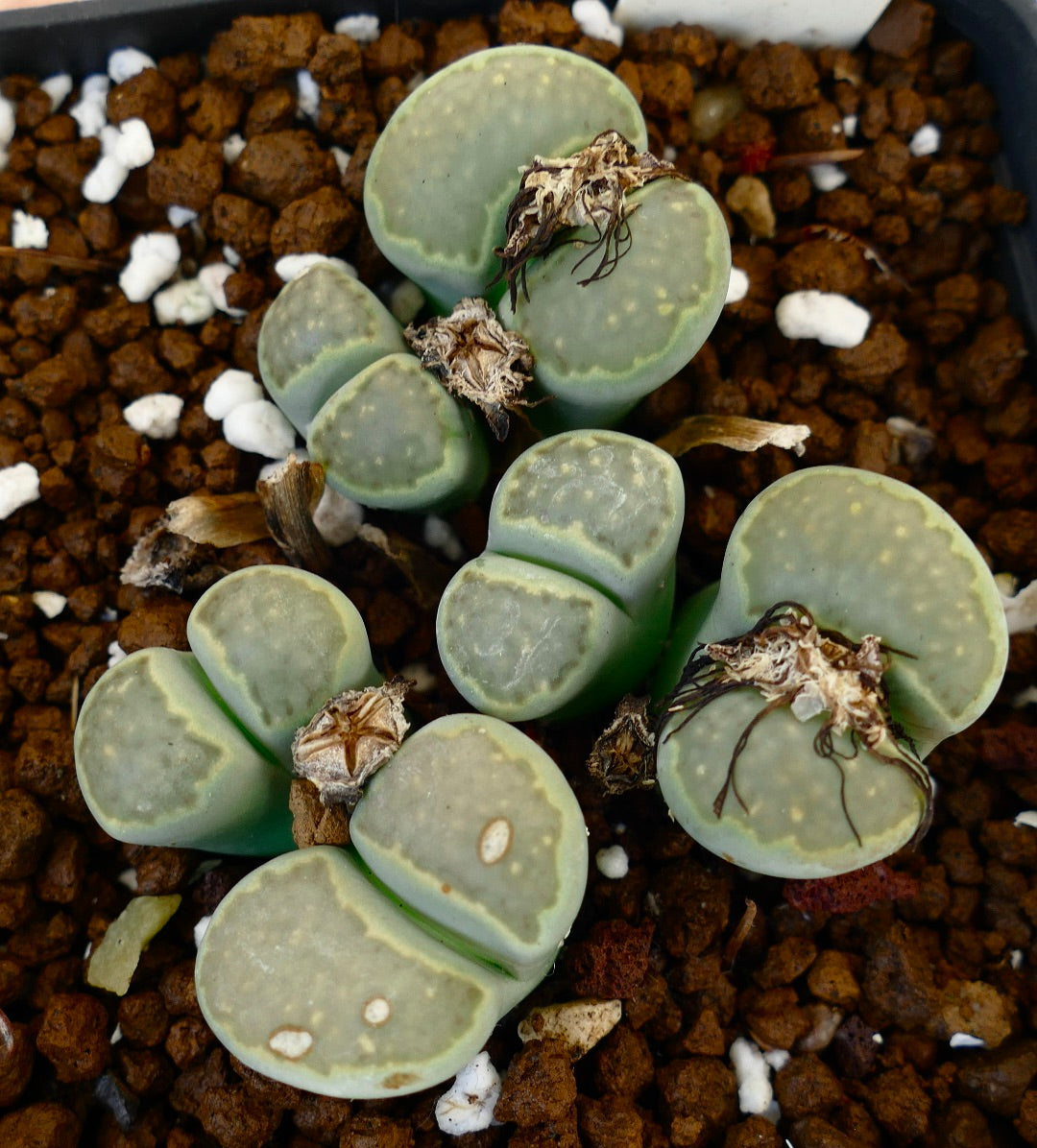- Single Specimen
Lithops salicola C351A 'Malachite'
Lithops salicola C351A 'Malachite'
Regular price
€30,00 EUR
Regular price
Sale price
€30,00 EUR
Unit price
per
Tax included.
Shipping calculated at checkout.
Couldn't load pickup availability
Product Description
THE SALE IS FOR ALL PLANTS IN THE POT
Botanical family: Aizoaceae
Botanical genus: Lithops
Botanical species: Lithops salicola C351A 'Malachite'
SKU:BA-3115-S
Cultivation
Cultivation
Info and Disclaimers
Info and Disclaimers
Plant Height:
Plant Diameter:
Pot Size:
Grafted/Not Grafted:
Picture take on:




